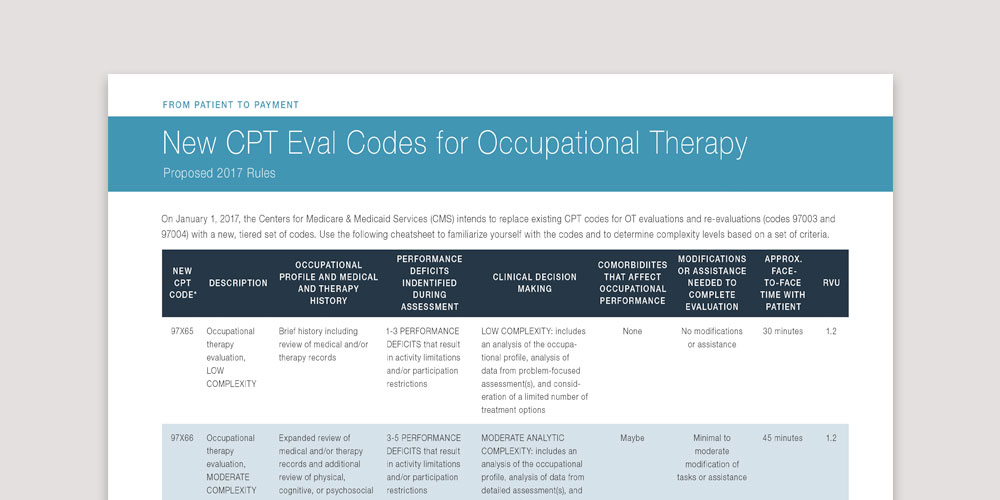Good news for occupational therapy! A recent study conducted by health policy researchers found that occupational therapy is the only spending category that results in significantly reduced hospital readmission rates, which is largely due in part to how OT places a unique focus on the patient’s return to his or her daily life.
Researchers looked at Medicare claims and cost data to understand hospital spending for specific services and the 30-day admission rates for heart failure, pneumonia, and acute myocardial infarction. The correlation focuses on occupational therapy’s mission to improve patient’s functional and social needs, which are huge underlying factors in readmission if left unaddressed. Improvement of daily functions is immensely important for the safety of patients, and thus are the primary focus of occupational therapists.

Are you prepared for new CPT codes for OT evaluations in 2017? Download this handy cheat sheet now!
Get prepped today!Occupational therapists must often determine whether the patient can complete daily functions on their own, or whether a caregiver is ultimately needed. They focus on the patient’s well-being both in and outside of therapy.
The study cited six specific interventions that OTs can provide to lower readmission rates.
- Provide recommendations and training for caregivers.
- Determine whether patients can safely live independently, or require further rehabilitation or nursing care.
- Address existing disabilities with assistive devices so patients can safely perform activities of daily living (e.g., using the bathroom, bathing, getting dressed, making a meal).
- Perform home safety assessments before discharge to suggest modifications.
- Assess cognition and the ability to physically manipulate things like medication containers, and provide training when necessary.
- Work with physical therapists to increase the intensity of inpatient rehabilitation.
The results of this survey are especially rewarding to our industry and show the special role that occupational therapists play in today’s healthcare industry. To read the entire study click here.

Comments